Precious cargo - cliff dwelling wallabies carried to their new vertical home
Friday 15 August, 2025
A skilled team of Wildlife Unlimited field ecologists, Parks Victoria rangers, Department of Energy, Environment and Climate Action (DEECA) conservation scientists, Traditional Owners and wildlife sanctuary partners has once again pulled off a remarkable feat.
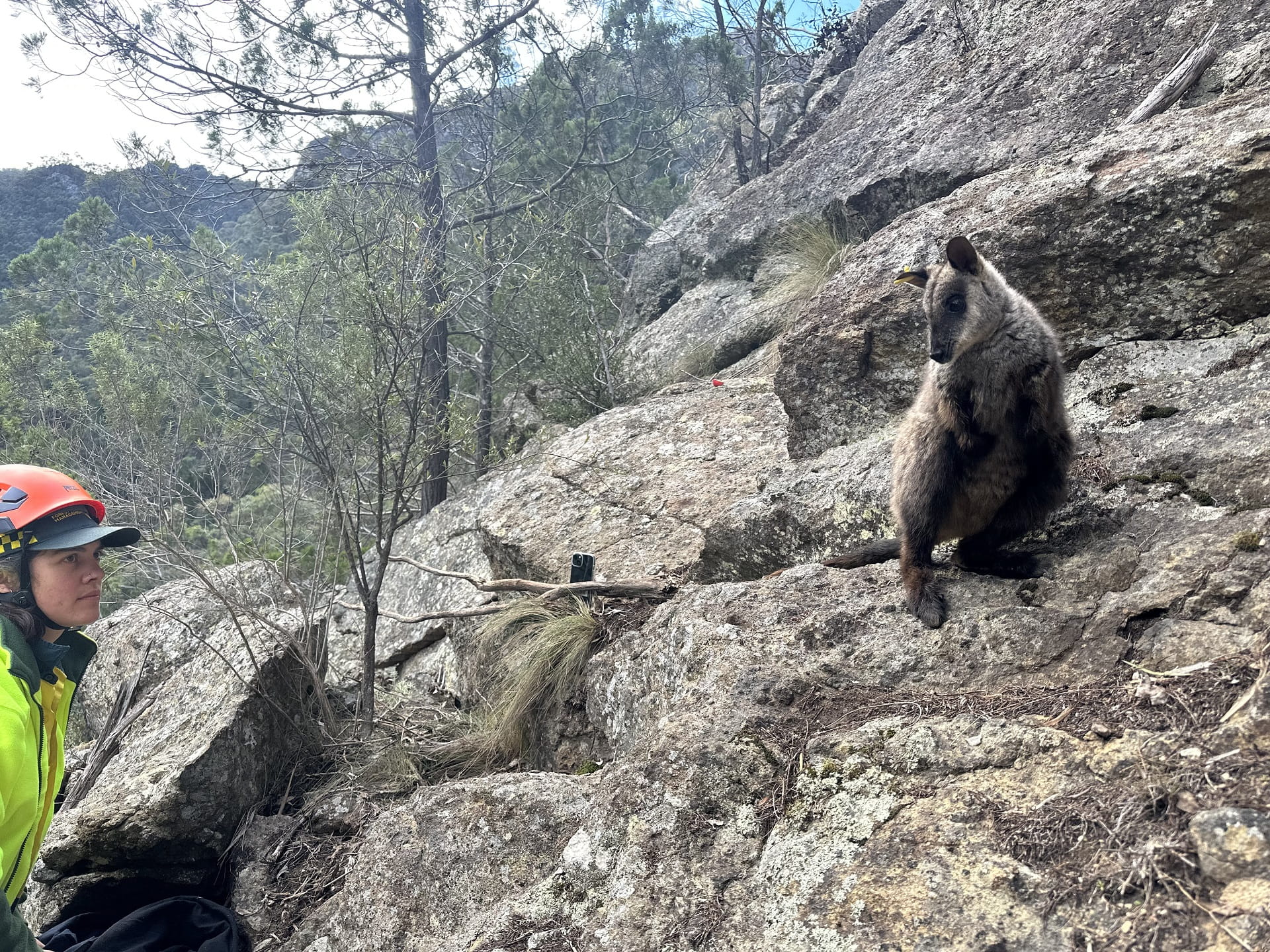
Magic moment: Parks Victoria ranger Ella Carr releases one of five Mount Rothwell sanctuary bred Brush-tailed Rock-wallabies in the Snowy River National Park to save the Little River Gorge colony from genetic collapse. Photo: Helen McDonnell.
For the sixth time in a decade, a surefooted team of specialists has backpacked Brush-tailed Rock-wallabies in and out of remote steep river gorges in eastern Victoria to prevent inbreeding in one of Australia’s rarest and most vulnerable native animals.
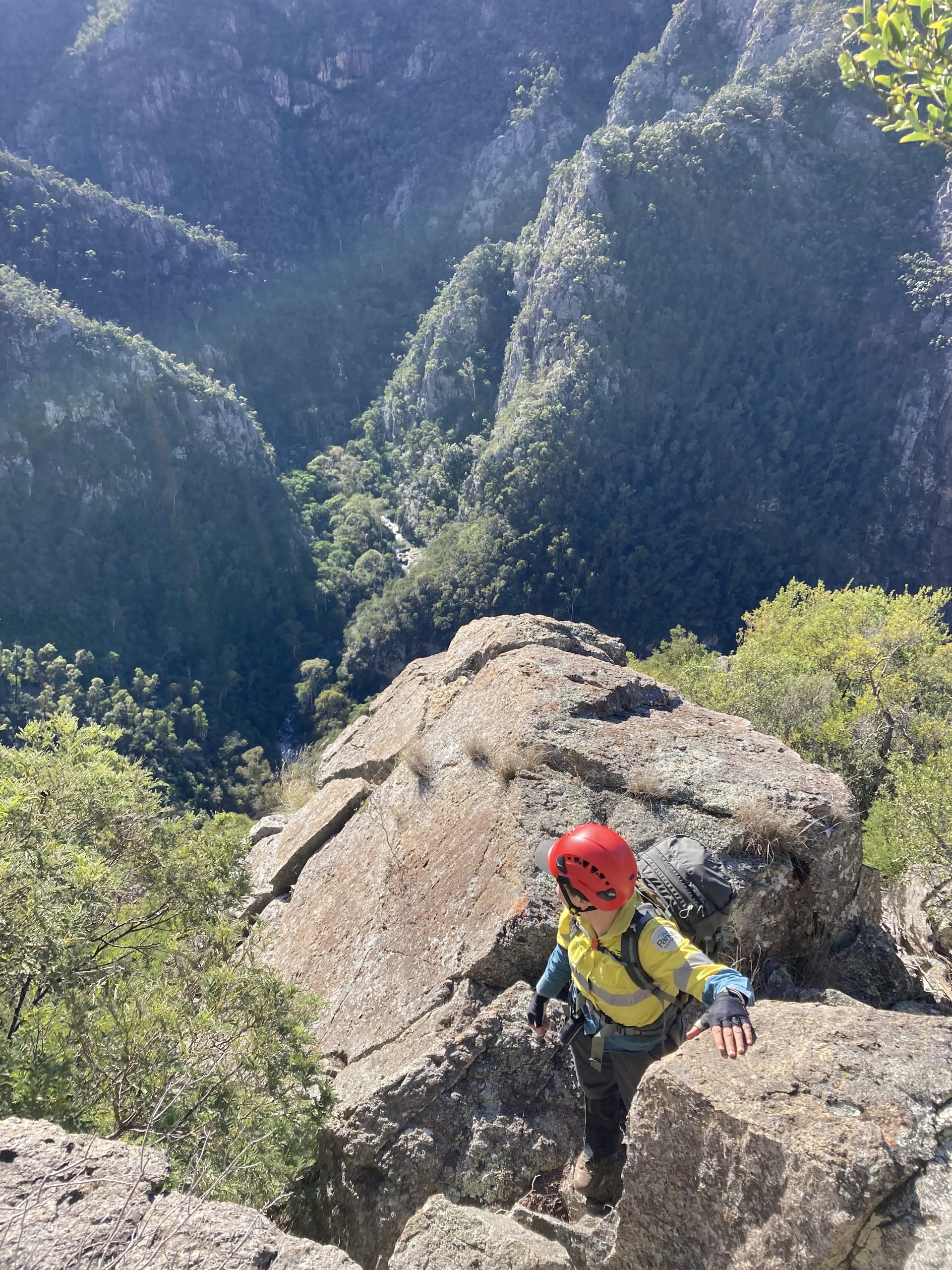
Three crews spent two days backpacking five Brush-tailed Rock-wallabies into the most remote areas of the Snowy River National Park, descending half a kilometre down Little River Gorge to reach the resident colony. Photo: Grace Waller
Recent history of a threatened species
Brush-tailed Rock-wallabies are incredibly special, golden-tinged wallabies that live their life amongst the sheer vertical cliffs of rocky ranges. They are the kangaroo equivalent of mountain goats.
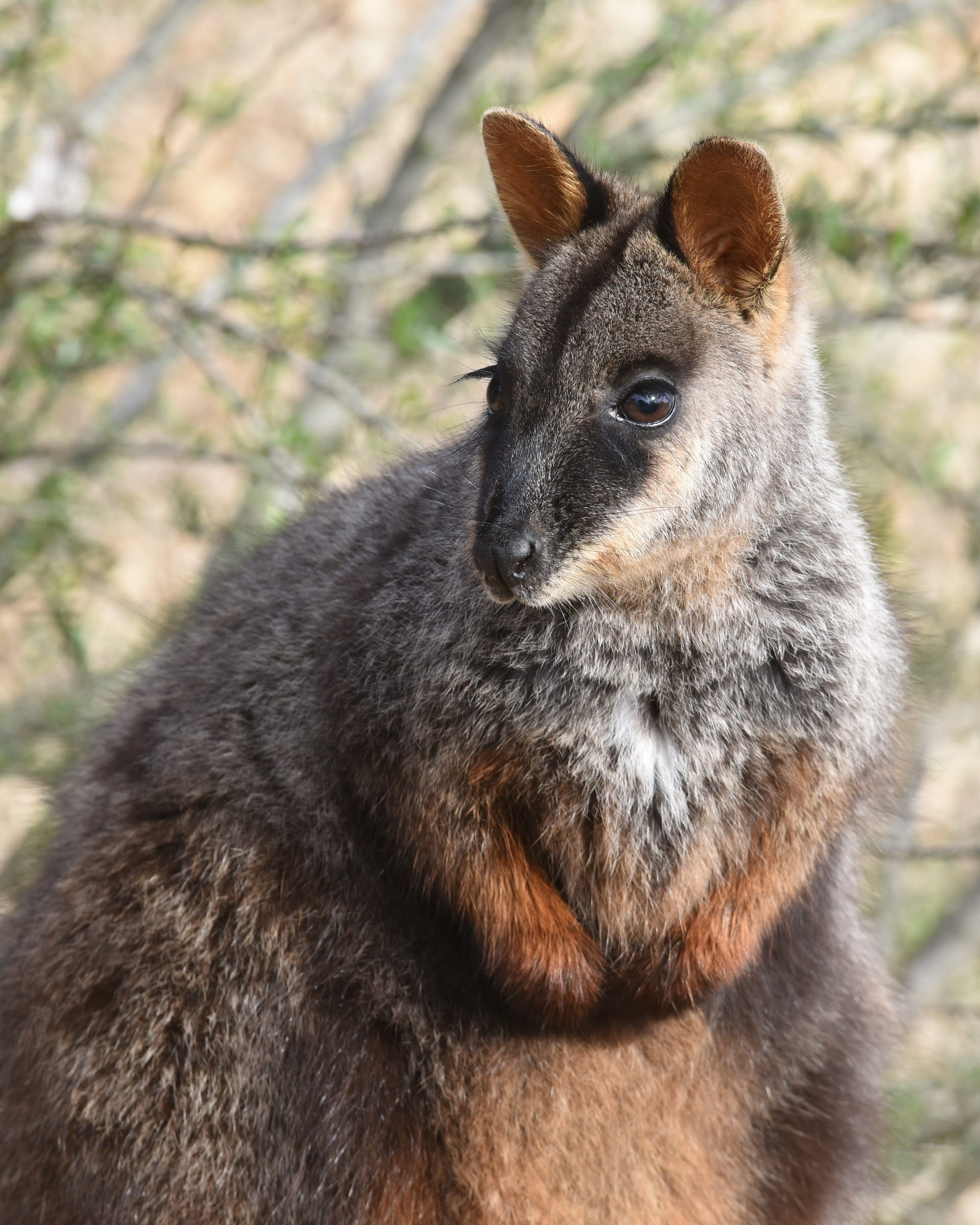 Only 80 Brush-tailed Rock-wallabies persist in the wild in Victoria today. Photo: Tony Mitchell
Only 80 Brush-tailed Rock-wallabies persist in the wild in Victoria today. Photo: Tony Mitchell
Before European settlement, Brush-tailed Rock-wallabies were common across south-east Australia. Today they are mainly located in northern New South Wales and southern Queensland.
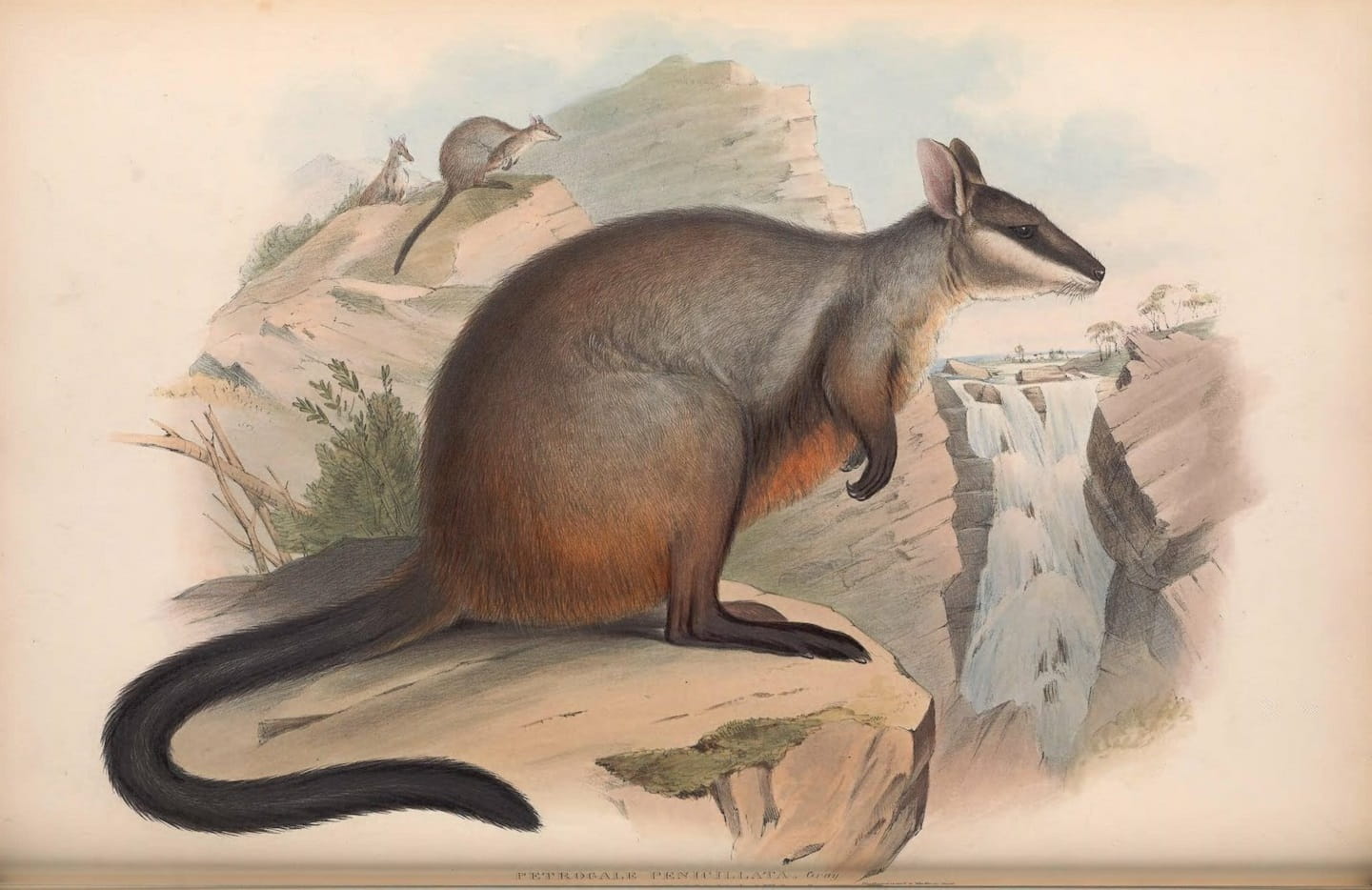
Brush-tailed Rock-wallabies suffered wide-spread decline in Victoria due to introduced predators, habitat loss, being hunted for fur in the 19th and 20th centuries and reduced genetic diversity from small population sizes.
At the peak of the destructive fur trade in the 1800s, estimates are that more than 1.5 million Rock-wallaby pelts were exported to Europe and the United States.
What we're doing now and why
Today, only 80 animals persist in the wild in two locations in Victoria. A reintroduced colony in Grampians (Gariwerd) National Park, spared from the impacts of severe summer bushfires by a sustained program of emergency feeding.
The second colony live in the remote and rugged Little River Gorge in the Snowy River National Park in eastern Victoria. Because of their low numbers and isolation, they were at risk of genetic collapse due to inbreeding.
Using DNA, scientists confirmed the small and isolated colony needed fresh genetics.
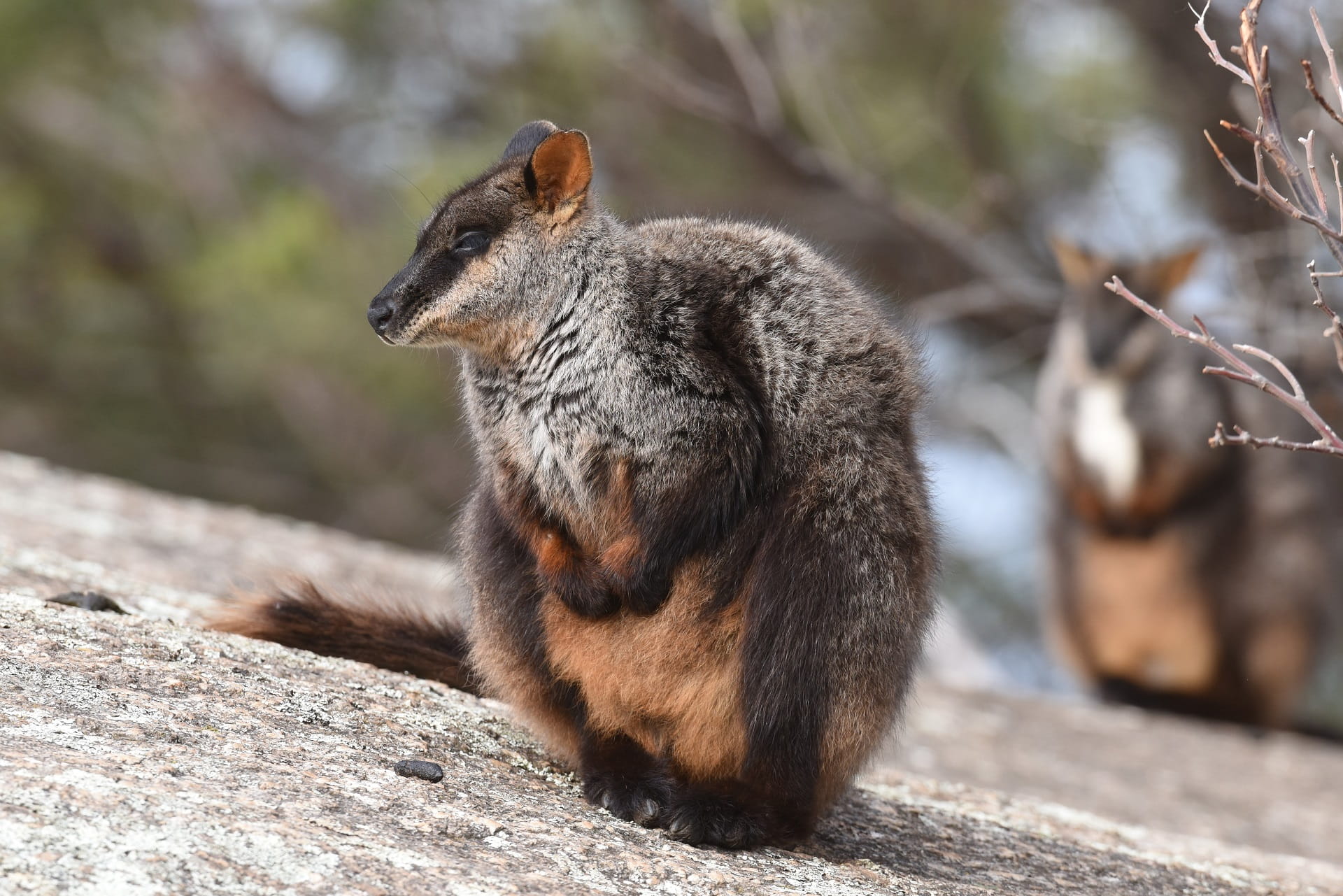
Mount Rothwell is Victoria's largest feral predator-free ecosystem with the most successful breeding program for Brush-tailed Rock-wallabies in a semi-wild environment. Photo: Tony Mitchell
50 km from Melbourne is Mount Rothwell sanctuary, Victoria’s largest feral predator-free sanctuary, managed by the Odonata Foundation. For the sixth time in ten years, hand-picked captive-bred animals from Mt Rothwell were carefully selected and transported almost 500 km across the state to East Gippsland to their new home and colony.
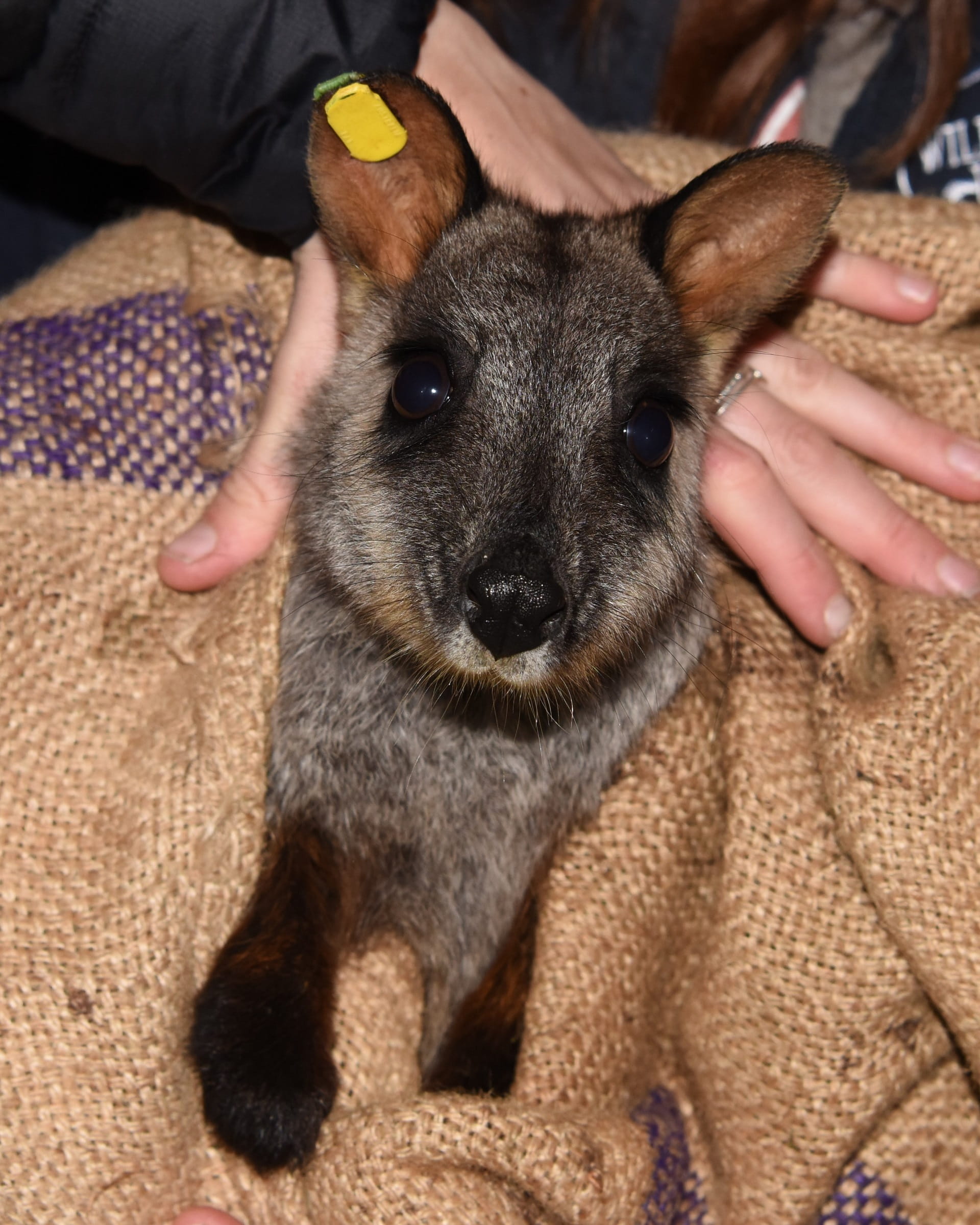
One of five hand-picked Mount Rothwell bred Brush-tailed Rock-wallabies prepares for the 500 km journey to Snowy River National Park. Photo: Tony Mitchell
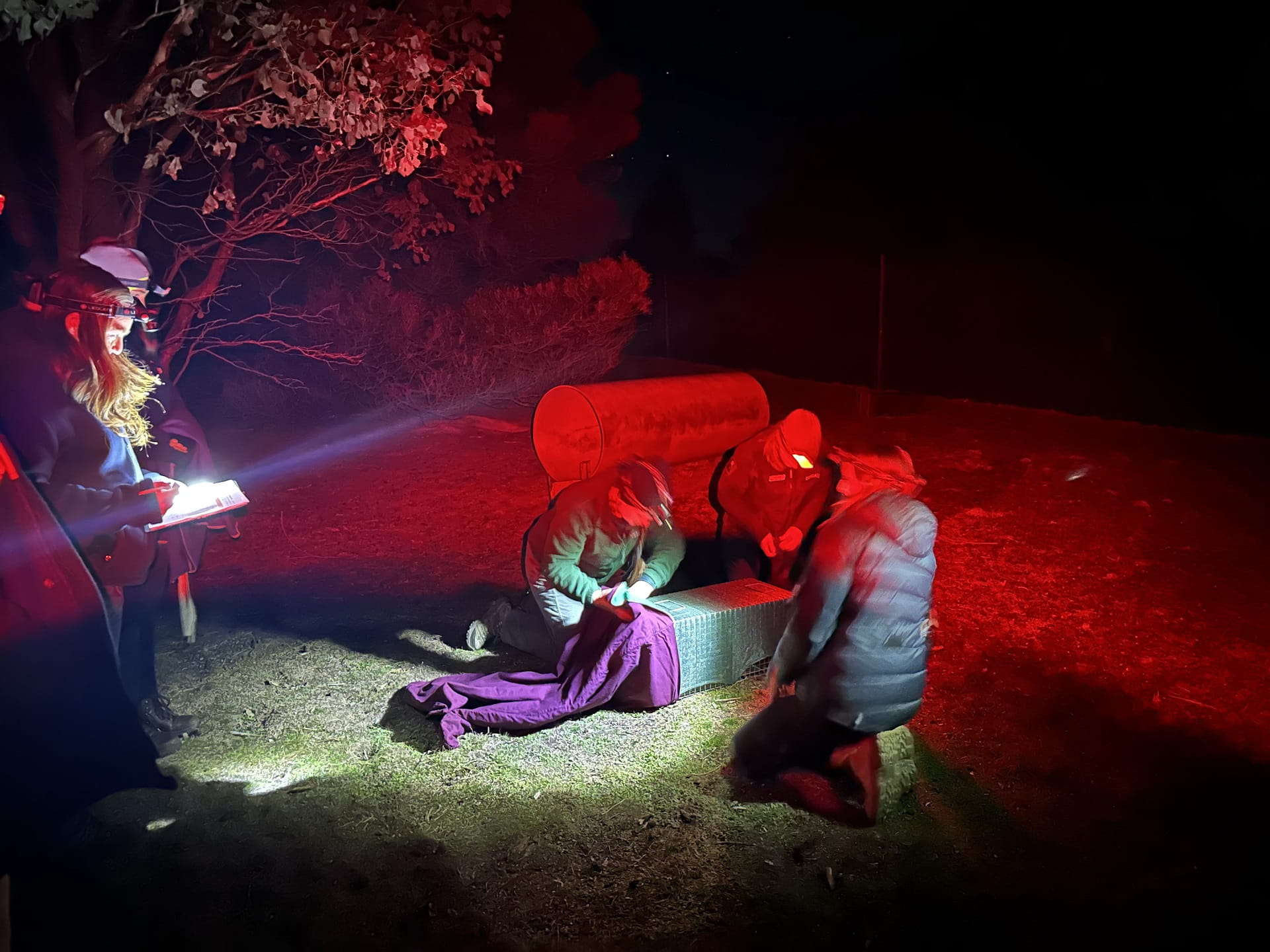 A team of specialists’ capture and weigh the captive-bred wallabies at Mount Rothwell. Photo: Peter Bire
A team of specialists’ capture and weigh the captive-bred wallabies at Mount Rothwell. Photo: Peter Bire
The latest delivery of three females and two males occurred in July this year. Ranging in weight from 4 to 8 kg, the precious cargo was health-checked and transported across the state under the cover of darkness.
A team of mountain-goat-like rangers and field ecologists at Gelantipy in the upper reaches of the Snowy River then carefully transferred them into padded backpacks for the next leg of the journey.
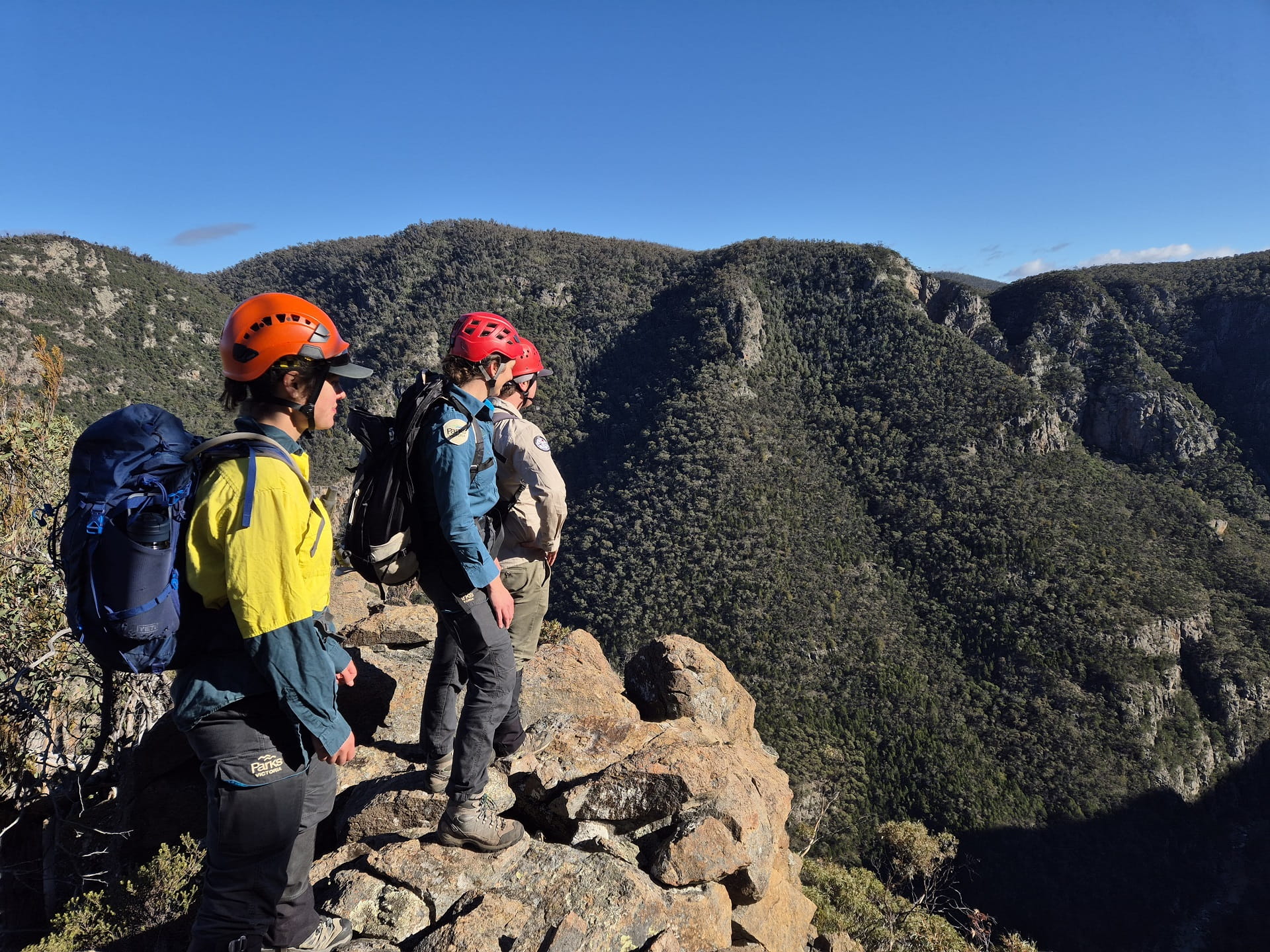
The precious cargo was gently carried in backpacks down the sheer cliffs of Little River Gorge to join the existing colony of around 55 wallabies. Photo: Willow Bourke
The precious cargo was then backpacked by three separate crews over two days for kilometres into the most remote areas of the Snowy River National Park, then almost half a kilometre down, where they were successfully released into the resident colony of around 55 wallabies .
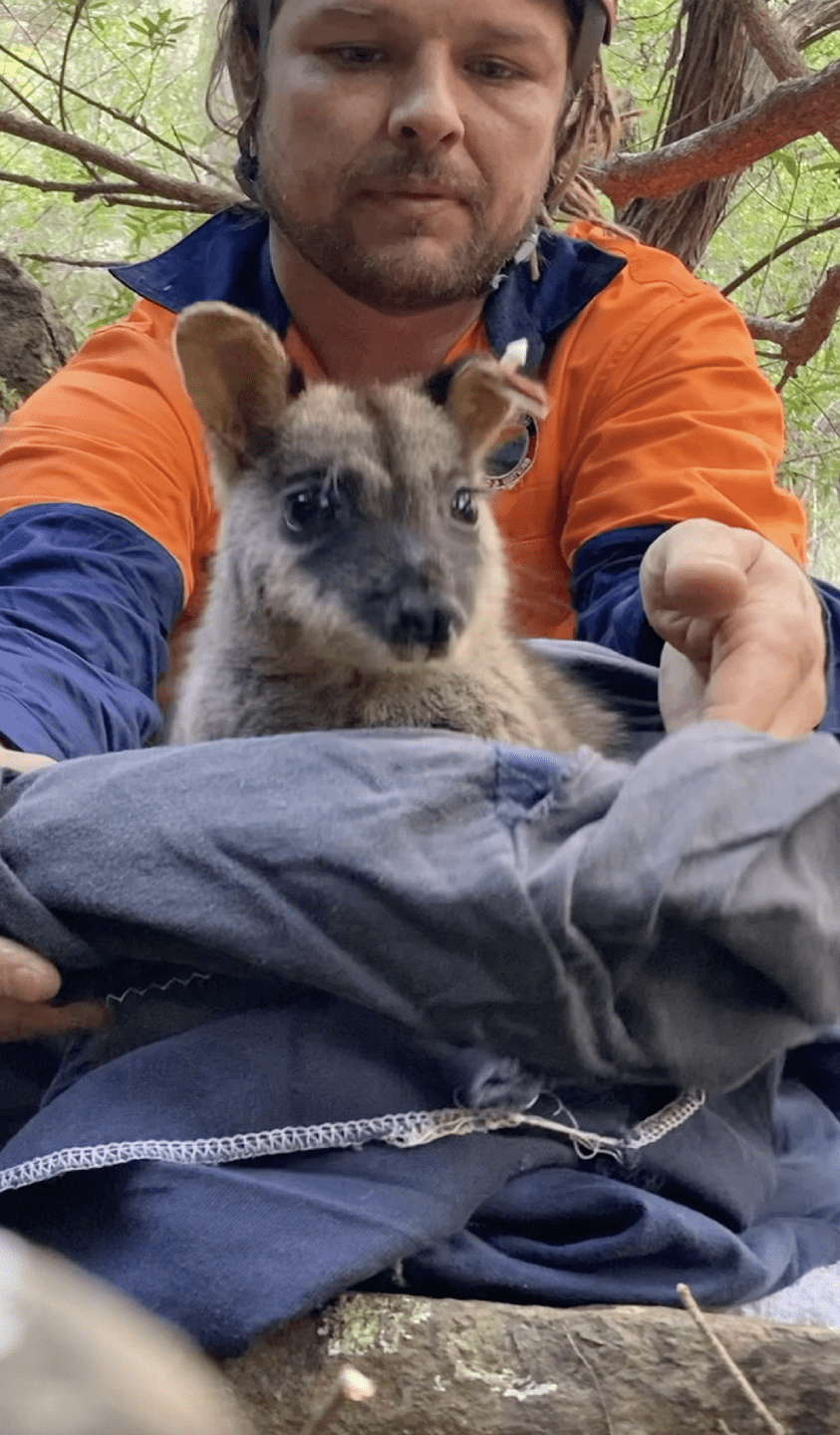
Bryce Baxter, Gunaikurnai ranger releasing one of five Brush-tailed Rock-wallabies into the Snowy River National Park.
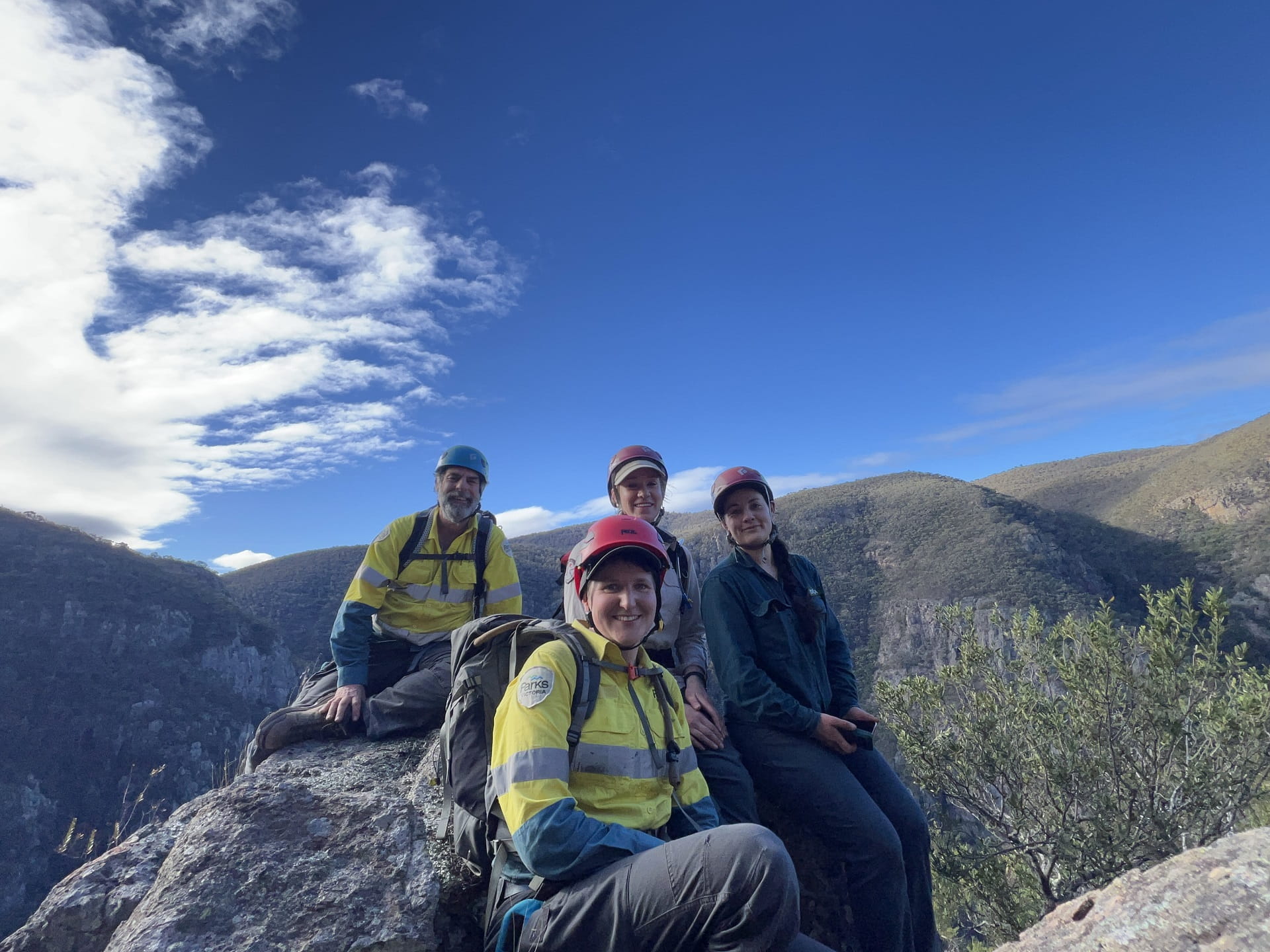
Back row (L-R): Dave Davidson (PV), Grace Waller (DEECA), Abbey Connell (Tidbinbilla) and, front: Jo Durrant (PV)
Special credit to Willow Bourke and team from Wildlife Unlimited/Rendere for their long-term lead roles in the recovery of these critically important rock wallaby colonies and expert herding of both wallabies and people, and to all staff who assisted from DEECA, Parks Victoria, Mount Rothwell Sanctuary/Odonata Foundation, Gunaikurnai Land and Water Aboriginal Corporation, Moogji Aboriginal Council, and Tidbinbilla Nature Reserve, ACT.

